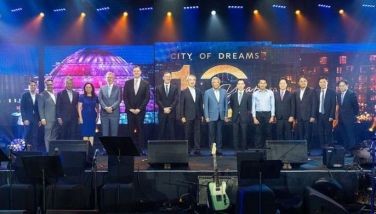Gabii sa kabilin, Participating Museums and Sites - Part 4
National Historic Shrine Liberation Monument Talisay City
6 p.m. to midnight May 27, 2016
The monument is dedicated to memorialize the Talisay Landing, or the arrival of American forces in Cebu to liberate the island from the Japanese.
More than 40 museums and sites are participating in this year's "Gabii sa Kabilin" tomorrow night, May 27. For a complete list, those interested may visit www.rafi.org.ph/culture-heritage/gabii-sa-kabilin.
Mactan International Airport Authority Lapu-Lapu City
Mactan Shrine
Barangay Maktan, Lapu-Lapu City
The monument of Lapu-Lapu, considered the first Filipino Hero, depicts the fierce Mactan native chieftain in his traditional garb and weapons. In this site was waged the historic battle between Lapu-Lapu and Ferdinand Magellan and their men on April 27, 1521. Although Magellan and his men wielded better weapons, Lapu-Lapu and his warriors wielded stronger hearts - their bravery fierce and furious. As a testament to their victory, the Magellan Marker stands right across the street - the very spot where the great navigator breathed his last.
NuestraSeñora Virgin delaRegla Parish Church
B.M. Dimataga Street, Lapu-Lapu City
Virgen de la Regla, or Our Lady of the Rule, was a title given to the Blessed Virgen Mary by the Cebuanos. The Augustinian Order, who were given control of the parish of Opon (old name of Lapulapu) brought the devotion of the Blessed Virgin Mary to its shores. The people of Opon first saw the picture of the Virgen de la Regla in 1735 when it was showed to them by the parish priest Fr. Francisco Avalle.
Muelle Osmeña
Lapu-Lapu City
Muelle Osmeña is named after the only Cebuano President of the Philippines, Sergio Osmeña Sr. The word "muelle" is Spanish for wharf and the wharf served as an entryway to the city of Lapulapu. In Muelle Osmeña stands a lighthouse created in 1910 and, just like the other infrastructures in the Spanish era, is made out of coral stones.
Archdiocesan Shrine of Santa Teresa
de Avila Parish Church
Rizal Street, Talisay City
The Church serves as a stark reminder of the center of governance and faith during the time of the Augustinians. Work on the first church started in 1836 and was completed in 1848. The architecture of the Santa Teresa de Avila Parish Church is among few churches in the entire Philippines to have the Graceo-Roman style.
Museo de Talisay
Rizal Street, Poblacion, Talisay City
The museum is housed in the Gabaldon Building of the Talisay City Central School. It is a general museum created in 2014 to exhibit the rich cultural history of Talisay City. The museum is built with education and learning in mind, not only for the students, but also for the rest of the people, particularlyfor the people of Talisay.
Tres Aliños Monument
Talisay City College, Talisay City
Hilario, Potenciano and Felix Aliño are three well-known brothers who were part of the Cebuano Katipuneros and who led the ambush in Talisay City in April 2, 1898. Recent studies have unveiled a fourth brother, Sulpicio Aliño, who was known to be religious and, unlike his brothers, held the rank of colonel rather than general. After his time in the Katipuneros, he became an evangelist of the Protestant faith. (FREEMAN)
- Latest

























